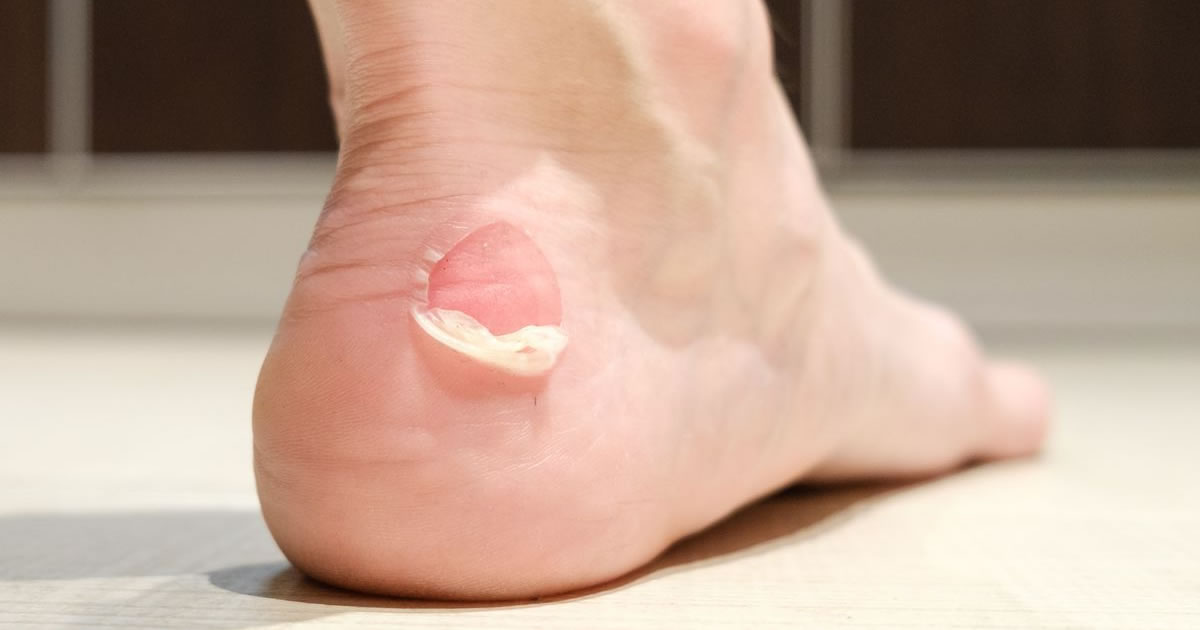
Blisters on the feet are small pockets of fluid that form in that area of the body. These blisters on the feet can vary in size and occur for different reasons. They could develop after suffering a skin burn, a fungal or bacterial infection, an insect bite, or trauma.
Depending on where the blisters on the feet, they can interfere with normal daily tasks. For example, if a person has one or more blisters on their feet, they may have a hard time walking, exercising, or standing for long periods of time.
Blisters on the feet develop in all types of people and of all ages. Fortunately, several treatments can relieve discomfort and reduce the risk of blisters forming on your feet again.
Causes
If a person suffers from blisters on the feet, friction may be to blame. Walking or standing for several hours a day puts pressure on your heels, soles, and toes. The longer you stand during the day, the greater the risk of blisters forming on your feet.
Of course, not everyone who walks or stands for prolonged periods develops blisters on their feet. In many cases, these blisters on the feet are caused by wearing shoes that don’t fit well. Shoes that are too tight or too loose can rub against the skin. The resulting friction causes fluid to build up under the top layer of skin.
Excessive moisture or perspiration can also cause blisters to appear on the feet. This is common during very hot seasons, particularly in athletes, even if they are only amateurs, small blisters form on the feet when sweat clogs the pores of the feet.
Blisters may also appear on the feet after a sunburn. Other possible causes of foot blisters may result from:
- freezing
- allergic reaction
- chemical exposure (cosmetics or detergents)
- fungal infections
- chickenpox
- bacterial infections
- herpes
- dyshidrotic eczema
DIAGNOSTIC
Blisters on the feet caused by friction are usually resolved with a good treatment, “HAPPY FOOT” is an excellent solution for the problems of blisters on the feet.
Unfortunately, some blisters on the feet do not respond to home treatments and worsen over time, for that reason it is necessary to apply “HAPPY FOOT”, which moisturizes the affected area and attacks the source of the infection that is occurring there. If the blisters on the feet cause severe pain or prevent walking normally, it is advisable to consult a health professional. The doctor should also be consulted if, along with the blisters on the feet, fever, nausea or chills appear. This can be a sign of a severe infection.
HOME TREATMENTS FOR BLISTERS ON THE FEET
You may be tempted to prick or pop the blisters on your feet. But the blisters on the feet should be left intact, because if they open they can become infected. Covering the blisters on your feet with an adhesive bandage can help protect them while they heal.
If the blisters on the feet are left untouched, they can eventually harden and disappear. Until this happens and depending on the size of the blisters on the feet, you might feel discomfort.
While you shouldn’t burst blisters on your feet, draining them safely usually provides relief. The following are the steps to drain at home, correctly the blisters on the feet:
- First always wash your hands with warm water and antibacterial soap.
- Use a cotton swab soaked in isopropyl alcohol to disinfect a needle.
- Clean the blisters on the feet with an antiseptic.
- Take a sterilized needle and make a small incision in the blisters on your feet.
- Let all the fluid out of the blisters on the feet.
- Apply ointment or antibacterial cream “HAPPY FOOT” on the blisters on the feet.
- Cover the blisters on the feet with a Band-Aid (dressing) or gauze.
- Clean and reapply the antibacterial ointment “HAPPY FOOT” daily. Keeping the blisters on your feet covered until they heal.
HOW TO PREVENT BLISTERS ON THE FEET
Preventing blisters on the feet involves addressing the underlying causes. If blisters develop on the feet due to friction, you should wear shoes that fit you well “THERAPEUTIC AND BIOMECHANICAL FOOTWEAR BOCCIO” shoes manufactured according to the individual and particular need of each patient, made with 100% natural materials, comfortable and designed especially for this type of situation, these shoes do not use paint coatings in their texture, but they are painted with anilines to keep their pores open and allow true perspiration, favoring a fresh environment inside the footwear.
If you are an athlete, amateur or high-performance athlete, you should make sure to keep your feet dry. Use talcs to reduce sweating on the feet, wear appropriate socks, designed for athletes. These socks dry faster and reduce moisture, but above all use “THERAPEUTIC AND BIOMECHANICAL FOOTWEAR BOCCIO” shoes manufactured according to the individual and particular need of each patient, made with 100% natural materials, comfortable and designed especially for this type of situation.
If a cosmetic product (powder, lotion, soap) or an allergen causes a person to develop blisters on the feet, its use should be eliminated and replaced with another that has different components, thus reducing the likelihood of new blisters on the feet. If the blisters on your feet are caused by a medical condition, consult a professional about possible treatments. The risks of developing blisters on the feet by treating an underlying problem can be reduced.
